By reimagining and redesigning public spaces, we can create environments that prioritize safety, sustainability, and the well-being of all citizens. Redesigning streets for people is a core tenant of urban development and plays a pivotal role in shaping a city’s identity and fostering a sense of community. This article explores the positive influence of street transformation. Two of the reimagined spaces showcased here were created by our partners at World Resource Institute. Collaborating with artist Jan Šrámek, two additional spaces were visualized to encourage a fresh perspective on the redesign of our cities.
1. Safe Streets for Cyclists:
Enhancing road safety for cyclists through the recreation of streets with dedicated bike lanes and car-free areas
This first example comes from WRI’s insights on safer road designs for cyclists. The absence of cars not only reduces the risk of accidents but also creates an environment conducive to a more enjoyable and stress-free cycling experience. To enhance road safety for cyclists on regular roads, there is a need for segregated cycling lanes, clear markings, and well-defined bike paths. Separating cyclists from motorized traffic through painted lanes, or physical barriers on busier roads, can significantly minimize the risk of collisions. Additionally, implementing traffic calming measures, such as reduced speed limits and , further contributes to fostering safer streets for cyclists.
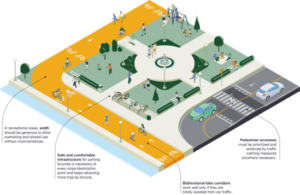
By prioritizing the creation of dedicated spaces for cyclists and promoting a culture of shared responsibility, we can transform our roads to be safer and contribute with car free areas to more active and transformative spaces for everyone.
2. Street Transformation in London: Mini-Holland
Improving conditions for cyclists, enhancing public realms, and reducing traffic congestion, pollution, and parking pressures on the streets
Before

This illustration represents the transformation of Church Streeet in Enfield, London, which was implemented as part of . The took place between 2013 and 2021 and is aimed at transforming cycling conditions and avoiding short car rides in the city’s outer boroughs. It stands as a beacon for effective street design. The London Mayor’s Healthy Streets Approach followed the strategy to implement high specification Dutch-style infrastructure, including redesigned junctions that are safer for cyclists and pedestrians, segregated cycle lanes on busy roads and reductions in the amount of traffic using residential streets.. Tree-lined along the transformed streets serve as more than aesthetic additions; they act as natural barriers, contributing to the reduction of air pollution and cooling the area.
After
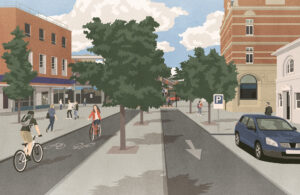
The presence of trees provides shade, creating a more comfortable and inviting atmosphere for pedestrians and cyclists alike. Furthermore, the greenery contributes to the overall beautification of the cityscape, transforming crowded streets into visually appealing and environmentally friendly spaces.
3. Tactical Street Urbanism: Pedestrianization for Citizen Health
Strengthening local commerce and creating sustainable, healthy, and safe pedestrian walkways.
Before
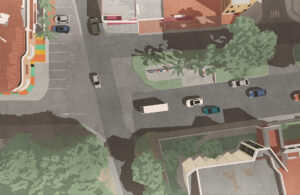
In Rionegro, Colombia, the focuses on transforming the streets via geometric design, bike lanes, zebra crossings, increasing vegetation, and traffic-calming measures. The project illustrates the possibility of increasing the public space and green areas for social interactions, favoring the quality of life of the population, and the local economy, and adding value to the environment through tactical design strategies.
Green elements in public spaces such as schools and hospital settings have the potential to reduce users’ feelings of stress, contribute to patient recovery, and assist in preventing while articulating and adding value to the local environment.
After
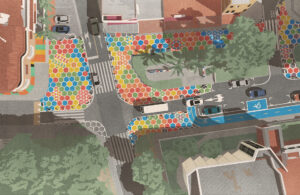
The tactical street urbanism in this illustration mainly focuses on surface improvement, the design of walking-only areas through curb extensions to increase the safety of vulnerable groups such as children and elderly patients, and greenery to contribute to a healthier, more visually appealing environment. The project not only aims to enhance local commerce but also recognizes the impact of green and open areas on mental well-being and epidemic prevention.
4. Street Activation in India: Curb Extensions
Implementing curb extensions for increased pedestrian safety and visibility
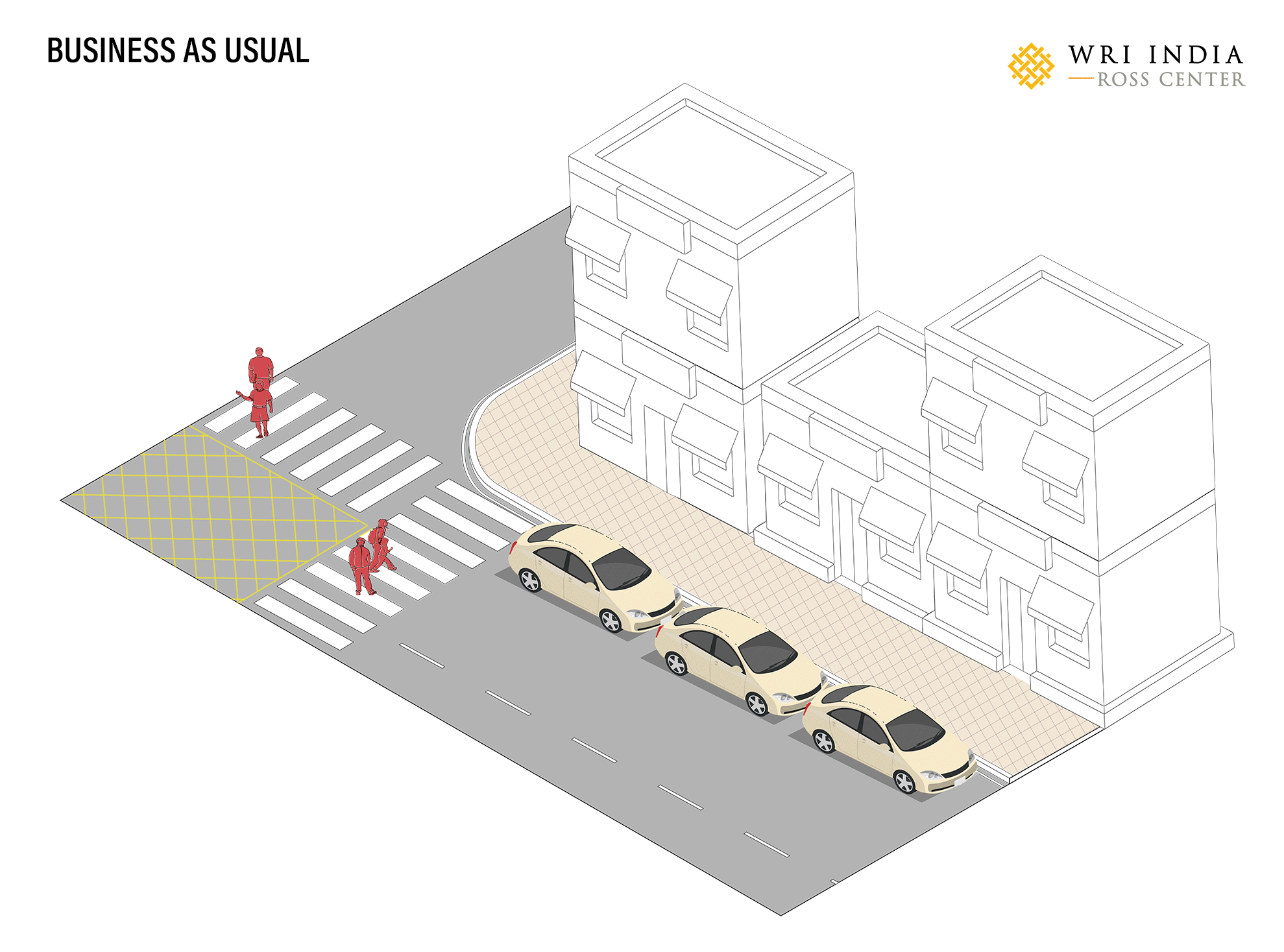
The case of Bellasis Road in Mumbai, India, showcases the use of curb extensions to reduce pedestrian crossing distance and pedestrians’ exposure to motorized vehicles. It should be noted that curb extensions, also known as bulb-outs, offer a multitude of benefits that enhance the functionality, safety, and aesthetics of urban spaces. By narrowing the road, curb extensions act as a traffic-calming measure, encouraging slower speeds and creating a safer environment for all road users. Additionally, these installations serve as effective placemaking elements, creating pockets of greenery and recreational features that contribute to the overall transformation towards livable streets.
Furthermore, curb extensions can not only act as catalysts for community interaction by providing comfortable seating areas and fostering a sense of engagement but also consider important accessibility features such as ramps for individuals with physical disabilities, wheelchair users, caretakers with parms, and safety measures like zebra crossings. Additionally, the inclusion of a bike parking facility promotes sustainable transportation, contributing to a more inclusive and environmentally friendly urban environment.
Conclusion: Paving the Way for Vibrant, Inclusive Streets
These projects underscore the importance of transformative street design in shaping urban landscapes. From fostering safer cycling environments to creating vibrant pedestrian walkways, each initiative contributes to healthier, more inclusive communities. let these examples inspire us to prioritize safety, sustainability, and the well-being of all citizens in urban development. By reimagining our streets, we lay the foundation for a future where urban spaces are not just functional but also reflective of the diverse needs and aspirations of the communities, they serve .